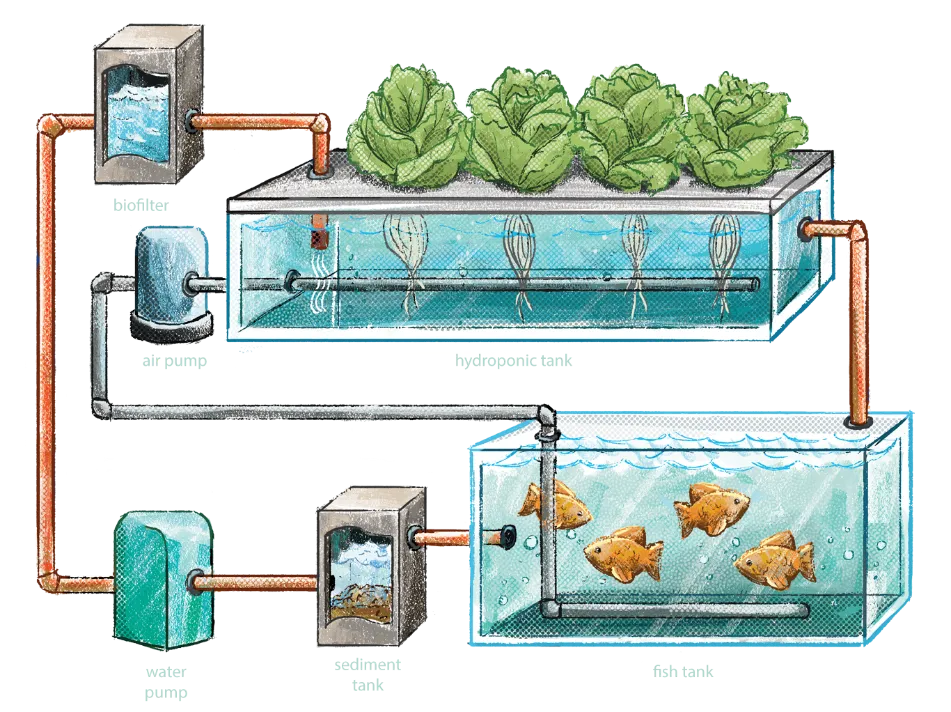Introducing Soil-U-tion Aquaponics
At PWD Smart FarmAbility, we are pioneering a holistic approach to sustainable agriculture by integrating soil-based and soilless methods through our innovative Soil-U-tion aquaponics satellite farms. Our strategy is rooted in the symbiotic benefits of combining these systems to foster regenerative soil practices and enhance overall farm productivity.
Benefits of Combining Soil and Soilless Systems
- Enhanced Soil Health: The integration of aquaponics into soil farming introduces nutrient-rich water into the soil, promoting the presence of earthworms and beneficial microbes. After just a few months, you can observe a thriving population of earthworms, indicating healthier and more fertile soil.
- Optimized Photosynthesis and Nutrient Cycles: Our method ensures a complete cycle of photosynthesis, protein, and lipid production. Plants in the soil benefit from natural sunlight and rich organic matter, while aquaponic systems provide a controlled environment for optimal plant growth and fish production.
- Carbon Sequestration: By improving soil health and increasing organic matter through our integrated farming approach, we enhance the soil's ability to sequester carbon. This not only combats climate change but also enriches the soil, making it more fertile and productive.
- Resource Efficiency: Our systems use water more efficiently than traditional farming, as water in aquaponics is recirculated. This reduces water consumption and minimizes waste, contributing to sustainable resource management.
- Food Security and Nutrition: The combination of soil and soilless farming allows us to produce a diverse range of crops and fish, addressing food insecurity and improving nutritional outcomes. Our farms can produce fresh vegetables, fruits, and fish, providing balanced and nutritious food options.
- Environmental and Humanitarian Impact: At PWD Smart FarmAbility, we are committed to tackling both environmental and humanitarian issues. Our sustainable farming practices help preserve natural resources, reduce carbon footprints, and promote food security, particularly in underserved communities.
Proven Long-Term Positive Impacts
Our continuous story of innovation and commitment to sustainability has proven long-term positive impacts, both qualitatively and quantifiably:
- Qualitative Benefits: Improved soil health, biodiversity, and ecosystem resilience.
- Quantifiable Benefits: Increased crop yields, higher nutritional quality of produce, reduced water and fertilizer usage, and significant carbon sequestration.
At PWD Smart FarmAbility, we offer our clients the best of both worlds by integrating cutting-edge technology with nature-positive practices. Our approach ensures that we address environmental challenges and humanitarian needs simultaneously, creating a sustainable and resilient agricultural system for the future.
How It Works

- Fish tank produces waste.
- Waste is used as fertilizer for the garden.
- Garden filters out waste from the water.
- Water is recycled for fish to use.